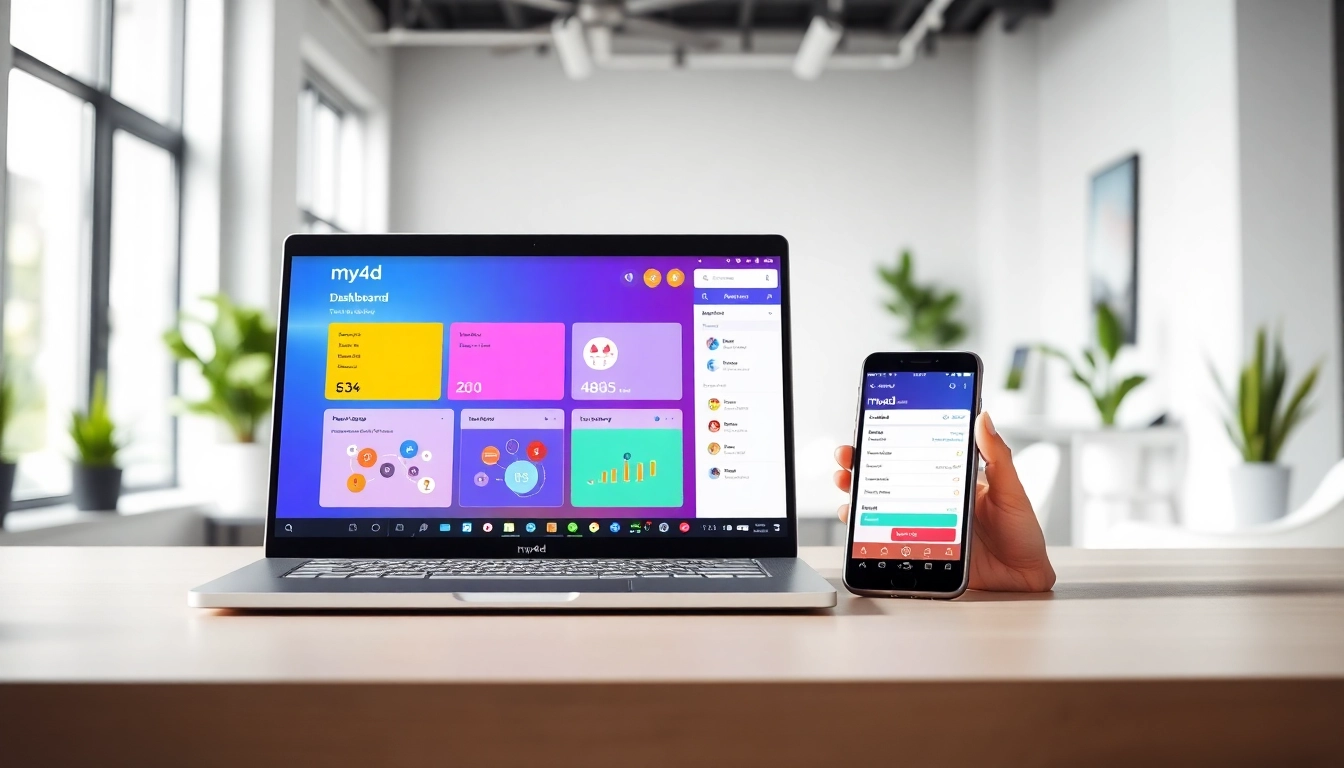
Understanding Smart Home Gadgets
What are Smart Home Gadgets?
Smart home gadgets are devices that utilize the Internet of Things (IoT) technology to connect and interact with each other and the users. They can be controlled remotely via a smartphone app, voice commands, or through automated programming. From smart lights that change color to smart locks that can be controlled from anywhere, these devices are designed to enhance convenience, improve energy efficiency, and increase overall home security. The integration of various smart devices can turn a regular home into a fully automated smart home. As a testament to this growing trend, you can explore the best smart home gadgets available in today’s market.
Benefits of Smart Home Devices
The advantages of incorporating smart home gadgets into your living space are vast. Here are some key benefits:
- Convenience: With the ability to control various devices from a single app or through voice commands, daily tasks become much simpler. Scheduling devices to operate automatically can save time daily.
- Energy Efficiency: Smart devices can help reduce energy consumption by allowing users to monitor and adjust their usage. For instance, smart thermostats learn your schedule and adjust the temperature based on when you are home or away.
- Enhanced Security: Smart security systems offer real-time monitoring and alerts for unusual activities. Doorbell cameras, smart locks, and motion detectors provide peace of mind while enhancing the safety of your home.
- Comfort and Personalization: Users can customize their environments with smart lighting and climate control, adjusting settings according to their personal preferences.
Key Features of the Best Smart Gadgets
When selecting smart home gadgets, it’s essential to consider the features that will provide the most value to your home. Here are some of the preferred features:
- Interconnectivity: The ability of devices to communicate and integrate with one another allows for seamless operation across different platforms.
- User-Friendly Interfaces: A simple, intuitive app interface enhances user experience, making it easier to monitor and manage devices.
- Scalability: The best smart home gadgets can be expanded easily, thus allowing users to add new devices and functionalities without replacing existing ones.
- Smart Assistance Compatibility: Devices that work with virtual assistants like Amazon Alexa, Google Assistant, or Apple HomeKit ensure versatility in controlling various gadgets.
Top Categories of Smart Home Gadgets
Smart Security Solutions
Smart security solutions are an integral aspect of smart home technology. They provide homeowners with innovative ways to monitor and protect their properties. Here are some key types:
- Smart Locks: With options for keyless entry, smart locks can be locked and unlocked remotely, while providing users with notifications and logs of entry attempts.
- Video Doorbells: These devices allow homeowners to see and communicate with visitors at their door from anywhere. Many models include motion sensors and night vision capabilities.
- Home Security Cameras: Indoor and outdoor cameras provide real-time video streaming, motion detection alerts, and cloud storage for recording footage.
- Alarm Systems: Smart alarm systems include sensors that detect motion, door/window openings, and can trigger alerts to the homeowner’s smartphone.
Smart Lighting Options
Smart lighting can dramatically alter environments and provide security benefits:
- Smart Bulbs: These allow users to change their brightness and color through an app or voice command. They can be scheduled to turn on or off and often include energy-saving settings.
- Smart Light Switches: Instead of replacing light bulbs, users can install smart switches to control existing fixtures through smart technology.
- Strip Lights: LED strip lights can be used for accent lighting and usually come with customizable color options to suit various moods or occasions.
Smart Thermostats and Climate Control
Climate control solutions designed for modern homes not only enhance comfort but also conserve energy:
- Smart Thermostats: Devices like the Nest Learning Thermostat adjust heating and cooling based on user habits and preferences, optimizing energy usage in real time.
- Smart Air Conditioners: These can be remotely controlled and programmed to operate, ensuring your home remains comfortable when you return.
- Humidity Sensors: Monitoring indoor humidity helps to maintain optimal air quality and can work in conjunction with HVAC systems for better efficiency.
How to Choose the Best Smart Home Gadgets
Compatibility with Existing Systems
When considering smart home gadgets, it’s vital to ensure they are compatible with your current systems. Not all devices play nicely with each other, so check for compatibility with existing routers, hubs, and other smart devices. Look for gadgets that work within major ecosystems like Apple HomeKit, Google Home, or Amazon Alexa to ensure seamless integration.
Budget Considerations
Setting a budget is crucial when exploring smart home technology. The range of options can vary dramatically in price, from budget-friendly smart plugs to premium security systems. Consider your needs, prioritize essential devices, and explore bundles that offer more devices at a lower combined price. While it may be tempting to go for the cheapest option, investing in high-quality, reputable gadgets may save you costs on replacements and utilities in the long run.
Future-proofing Your Smart Home
Smart home technology is rapidly evolving, and future-proofing your home can ensure that your investments will remain relevant for years to come. Look for devices that can be updated through software, have expandable systems, and are compatible with the latest technologies. Investing in high-quality devices with a proven track record and widespread support also contributes to the sustainability of your smart home.
Installation and Setup Tips for Smart Gadgets
Step-by-step Installation Guides
Installing smart home gadgets can vary from simple plug-and-play devices to complex system setups. Follow the manufacturer’s guidance for each gadget. Most devices come with comprehensive online resources, including installation videos. For multi-device setups, plan the installation strategically to avoid overwhelming confusion, ensuring each component works before moving to the next.
Connectivity and Network Setup
A crucial part of the setup is ensuring strong and reliable network connectivity. Most smart home gadgets utilize Wi-Fi or Bluetooth protocols, and a strong home network will minimize connectivity issues. Position your router optimally and consider Wi-Fi extenders if needed. Also, keeping your network secure with a strong password helps protect your devices from potential breaches.
Common Troubleshooting Tips
Almost every smart home gadget user faces some troubleshooting. Here are a few common issues and solutions:
- Device Not Responding: Ensure that it is powered, connected to Wi-Fi, and check for software updates.
- Connectivity Issues: Restart the router and the device, ensure your Wi-Fi signal is strong, and check for possible interference from other devices.
- App Not Syncing: Log out of the app and log back in, check for updates, or reinstall the app to resolve syncing issues.
Enhancing Your Home with Automation
Creating Smart Home Routines
One of the most powerful aspects of smart home technology is automation. Set up routines to simplify daily tasks. For example, a morning routine could turn on the coffee maker, gradually brighten smart bulbs, and adjust the thermostat to your preferred temperature simultaneously. Use the manufacturer’s app or compatible home assistant platforms to define these routines easily.
Integrating Voice Assistants
Voice assistants like Amazon Alexa, Google Assistant, and Apple Siri can provide seamless control over your smart home. Integrate these assistants by linking them with your smart devices, allowing you to control everything from lighting to security systems with voice commands. This hands-free control can significantly enhance convenience and accessibility.
Monitoring Energy Usage and Savings
Many smart home gadgets now offer monitoring features, which help users track energy consumption and identify potential savings. Smart plugs, thermostats, and smart lighting options often provide analytics through their accompanying apps, allowing users to make informed decisions about their energy use. By analyzing patterns in usage, homeowners can adjust settings, thus reducing energy bills and contributing to sustainability.







